Cctv Camera Drawing in Autocad
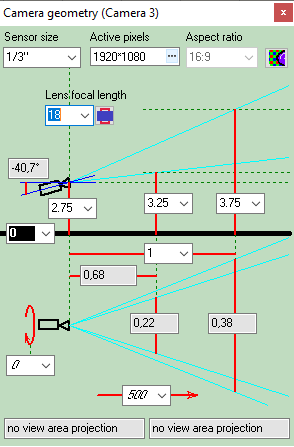
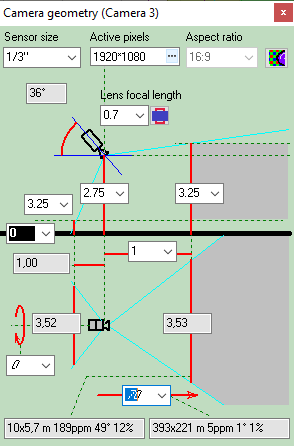
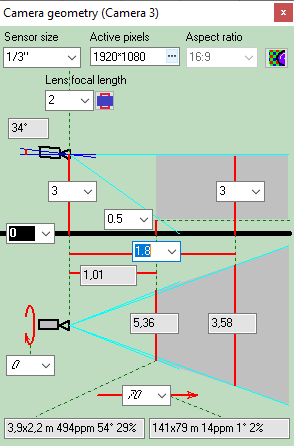
Calculating size of the active area of the image sensor in dependence of the aspect ratio of the image sensor and the aspect ratio of the output image of the camera.
Calculate the horizontal projection sizes of person detection, identification and license plate reading areas.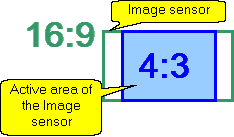
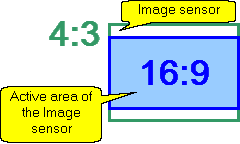
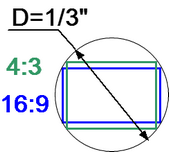
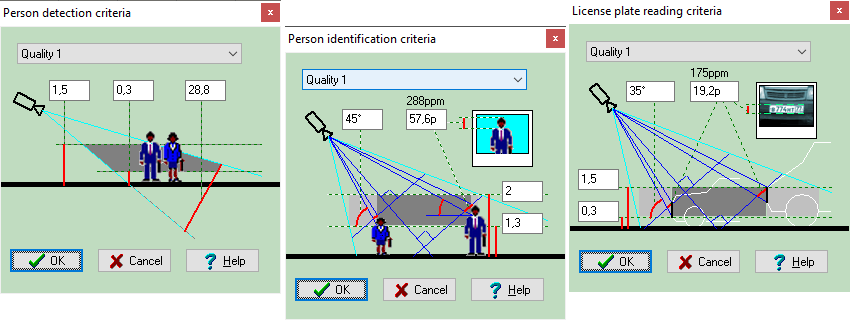
Calculate the image size on display of any object in camera view area in percentage of display size, pixels and millimetres (or inches in case of Imperial format).

Calculate depth of field of each camera in project.

Calculate the length and electric parameters of cables.
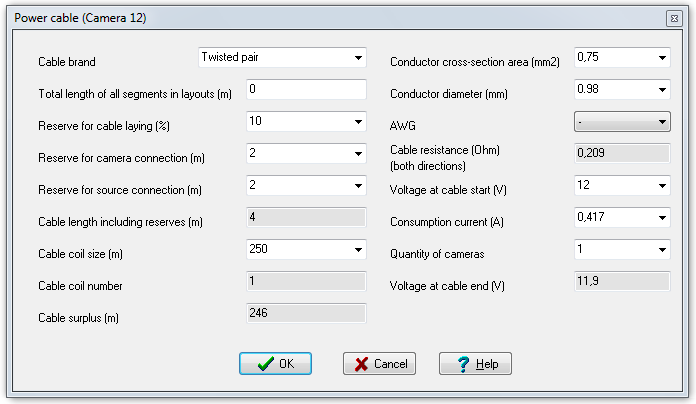
Calculate light power and illumination produced by illuminators with photometric accuracy, including discharge lamps with complex spectrum and infrared LED illuminators.
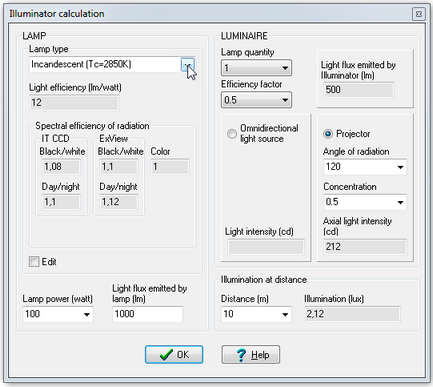
Working with 2D projections
Choose visually a relative location of cameras using the graphics window with CAD interface. Use a lot of 2D/3D constructions and CAD tools, snaps, line types, font types, horizontal and vertical projections, up to 10 layouts in each project, unlimited number of layers.

2D modeling in horizontal and vertical projections is possible.
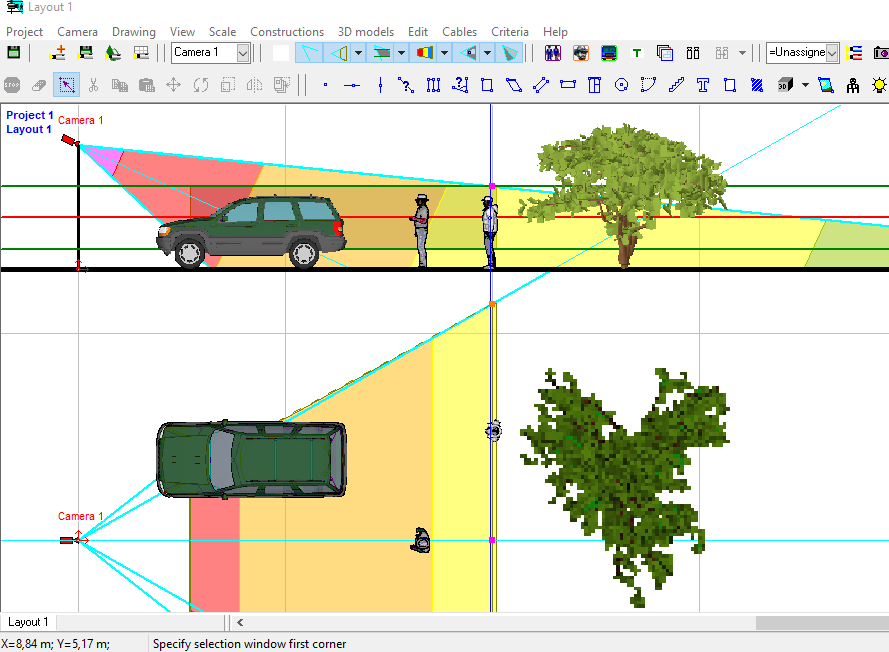
Display on the 2D layout results of calculations: view area projections, person detection and identification areas, depth of field limits, test object, cables and luminaries.
Display by separate colors and hatch styles different regions of pixel density and field-of-view size. There are prepared pixel density patterns according to the following criteria: Home Office Scientific Development Branch; Home Office Guidelines for identification; P 78.36.008-99, Australian Standard AS4806: Closed Circuit Television, European Standard EN50132-7, ISO/IEC 19794 Biometric data interchange formats, EN 62676-4 2015.
![]()
![]()

The Edit Test Image tool to quickly create test images for pixel density tables from custom photos. Using any photos allows you to take into account specifics of real goals and scenes.
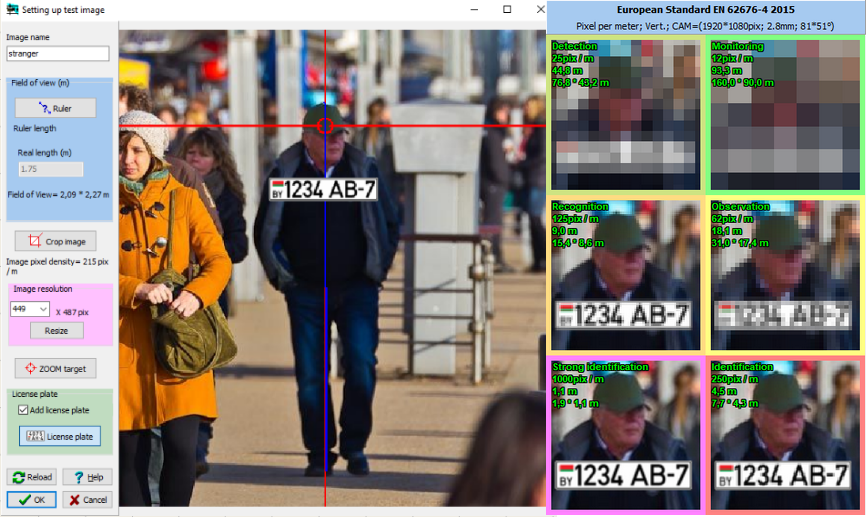
Calculate the horizontal projection of camera control areas including shadows from obstacles on the scene.
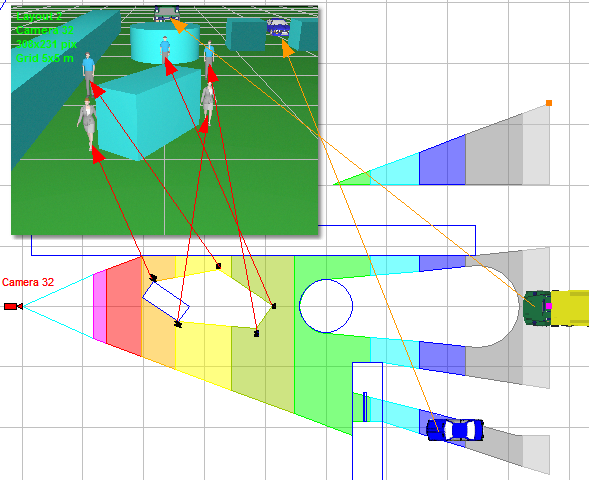
Choose the best positions and calculate control areas in 360 degrees.

Modeling camera rotation around the main optical axis.

Modeling lens distortion. Modeling influence of the lens distortion on view area shape, on view area projection shape and pixel density distribution. Correct modeling wide-angle lenses with strong distortion.
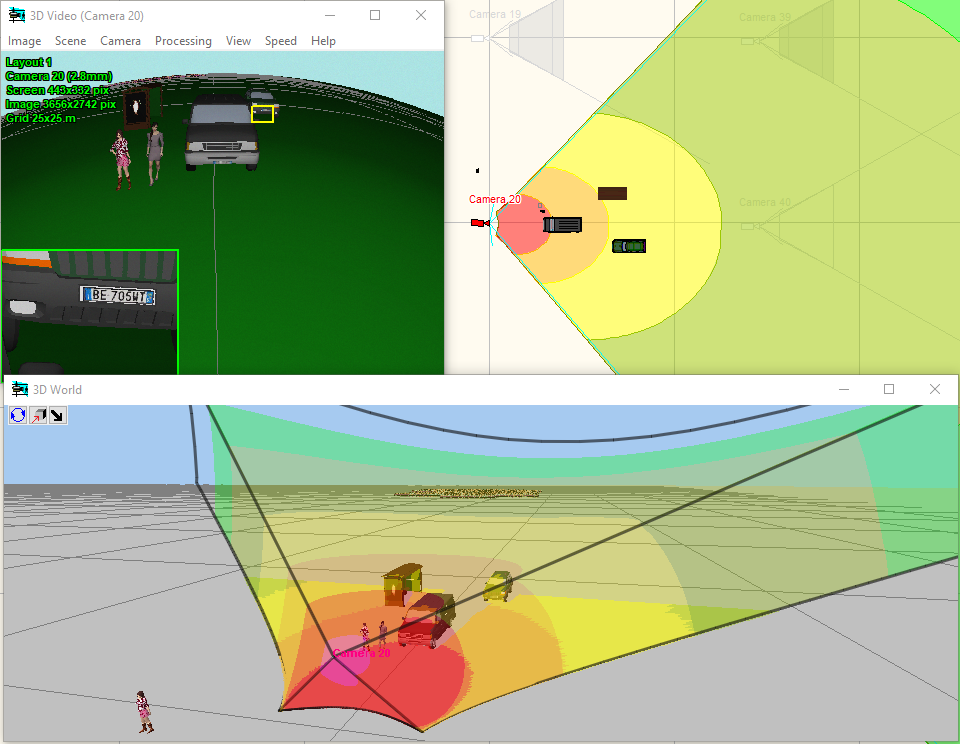
Simulating distortion of varifocal / ZOOM lenses with a complex dependence of distortion on the focal length.

Quick assessment of the view of any 3D model through any camera, depending on relative position of the camera and the 3D model in space.
3D modeling layout and camera view areas
VideoCAD has special 3D World window with standard tools for 3D navigation (Orbit, Move, ZOOM, Walk, Look around, Zoom frame). With the help of the window you can observe the layout in 3D representation. You can work on the project in usual 2D projections and watch it in 3D. You can "walk" on the floors of 3D models of buildings and study every detail.
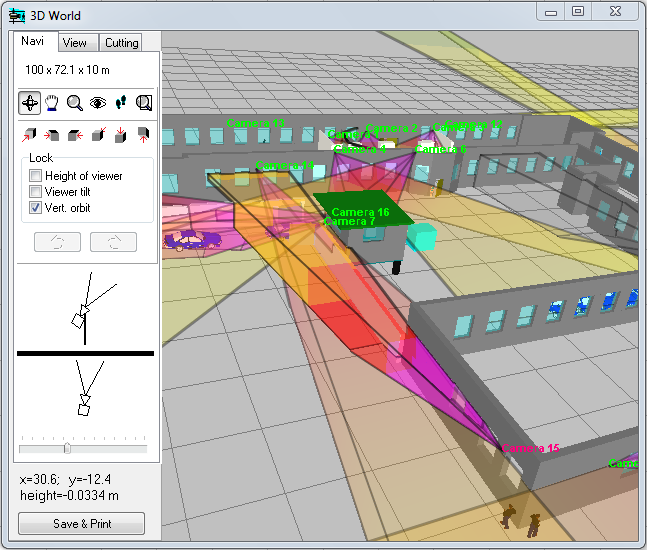
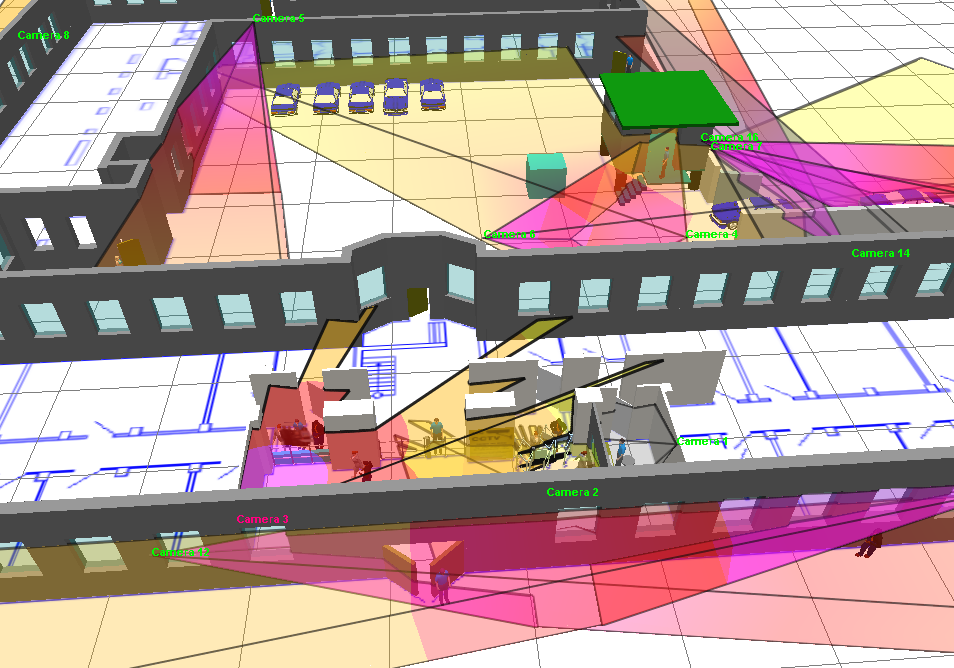


3D visualization of the camera view area surface taking into account pixel density, shadows, lens distortion.
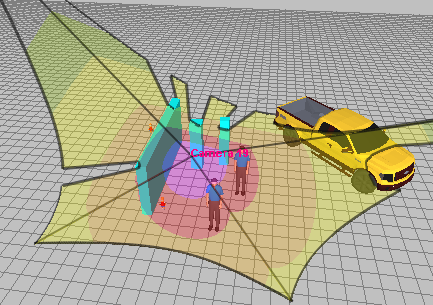

3D visualization of the active camera coverage on the environment taking into account pixel density, shadows, lens distortion.
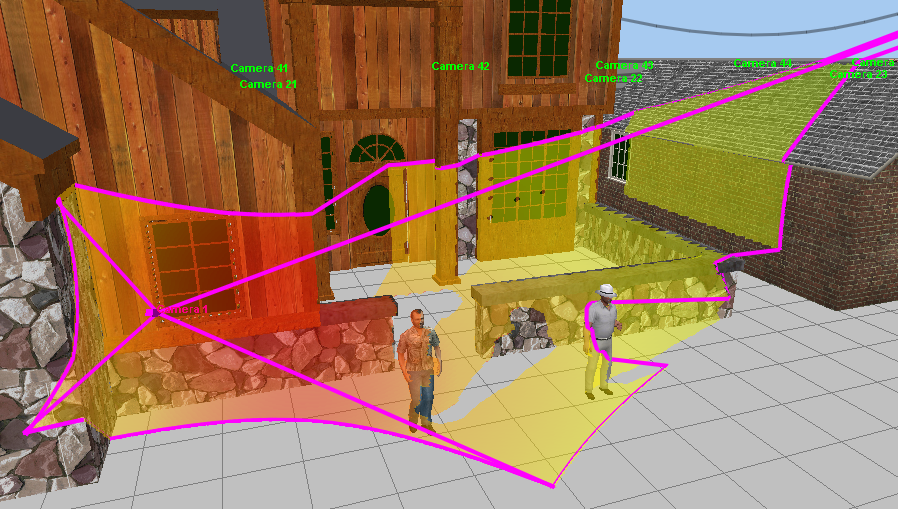

3D visualization of the control areas of PTZ cameras, Dome cameras and 360 degree cameras.
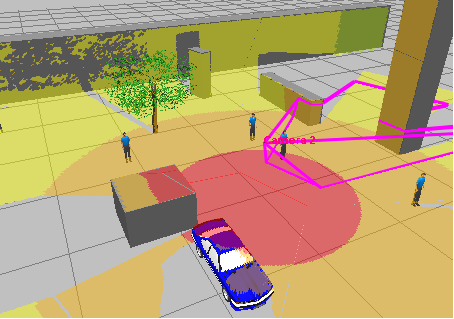
Visualization of camera coverage area and pixel density distribution on the surrounding objects of Panoramic cameras (fisheye, 360�/180�).
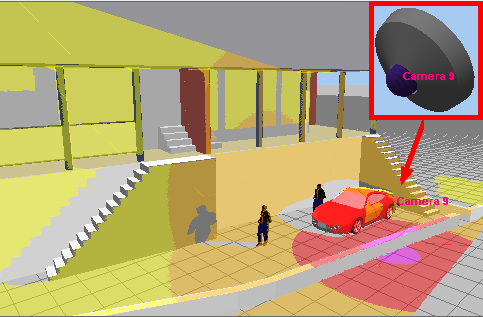
Free cutting 3D layout by six planes to provide access to any point of complex 3D buildings.
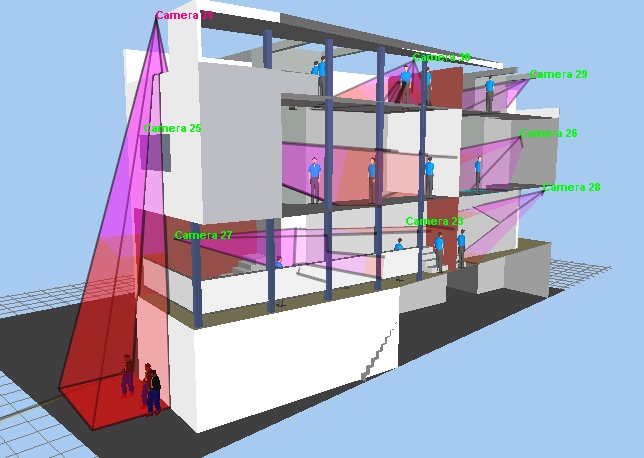
Working with multilevel 3D layouts and terrains with complicated vertical structure.
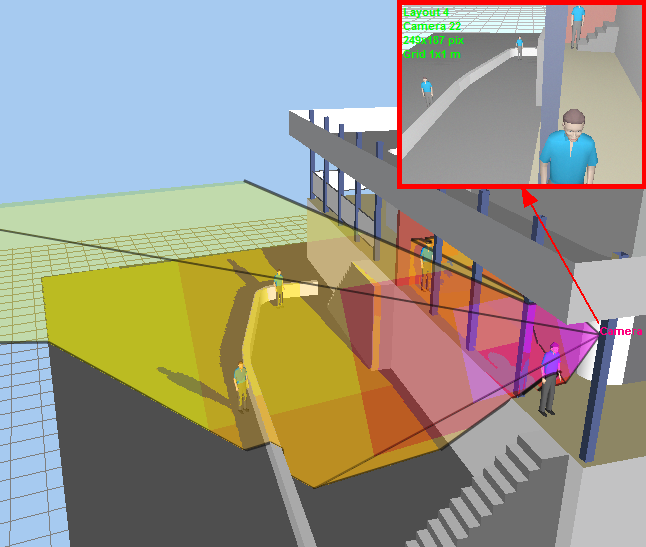
Possibility of loading prepared 3D models (a person, a car, etc.). Built in 3D model library.
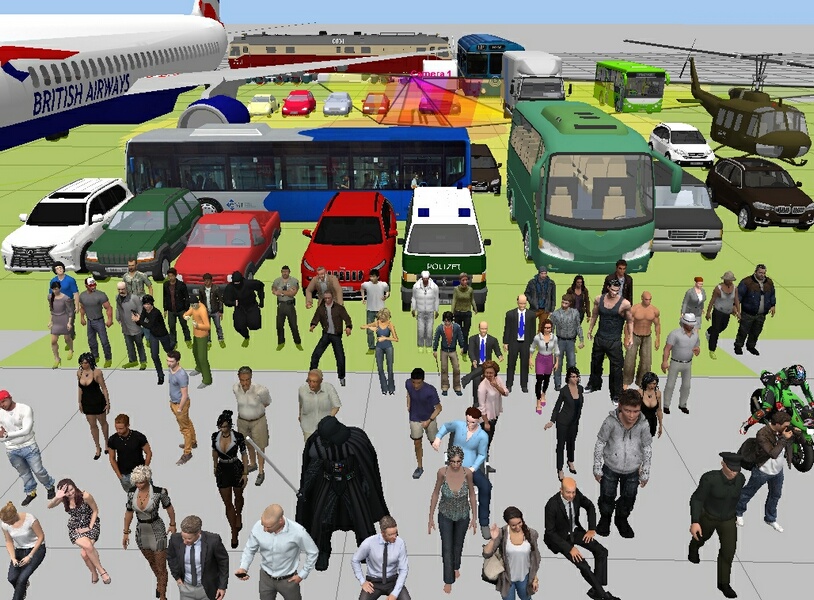
You can import ready 3D models of objects and territories from files: *.3ds, *.ase (3D Studio max), *.dae, *.xml (Collada), *.obj and more than twenty 3D formats. You can download 3D models in Collada format (*.dae) from free SketchUP 3D Warehouse library, use 3DS Max models from designer's libraries, 3D models from game model libraries, create 3D models in SketchUP, save them in *.dae and import in VideoCAD.
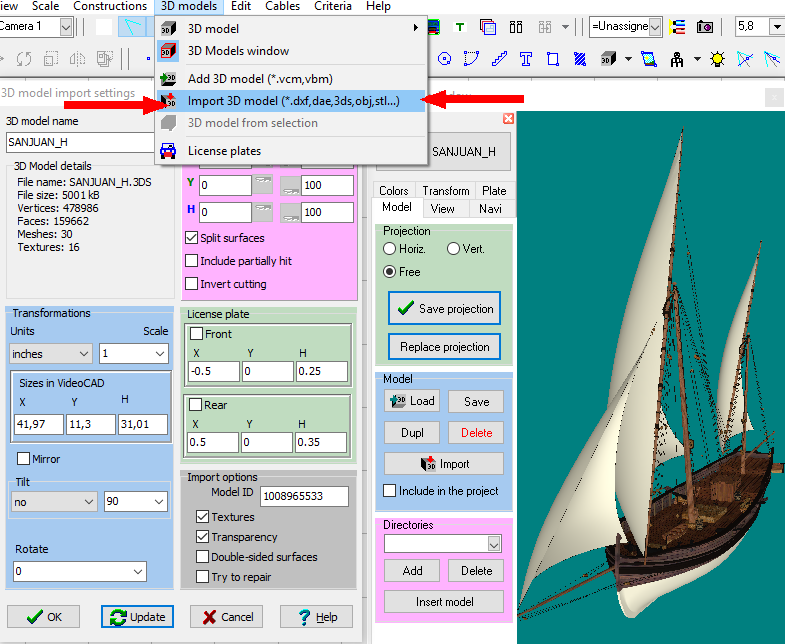
You can create 3D models in VideoCAD itself from selected constructions and existing 3D models in any combinations, you can merge 3D models and constructions.
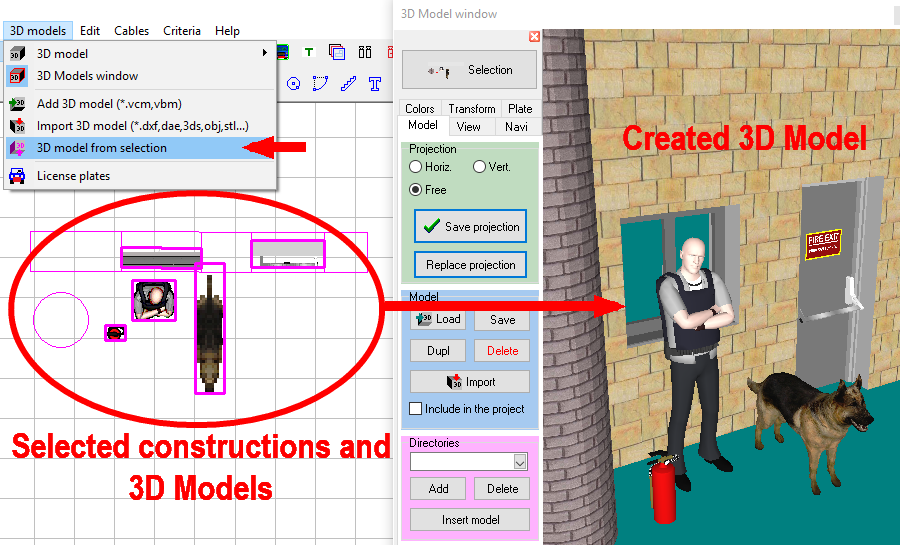
You can transform, rotate and tilt 3D models (including 3D models created from constructions).
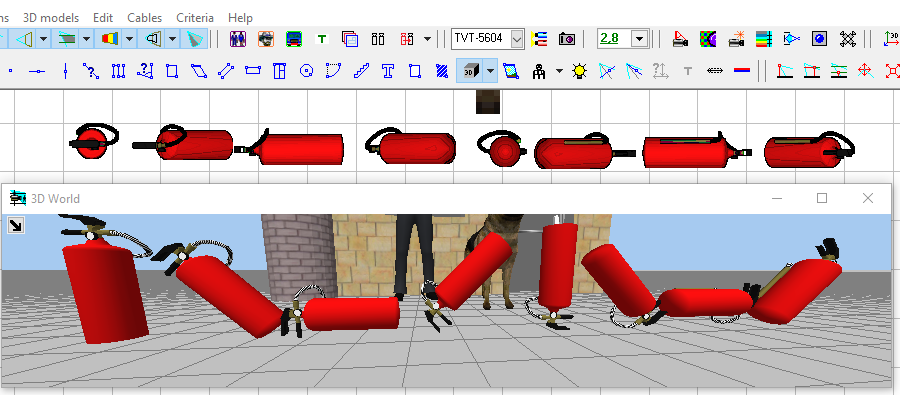
You can cut out parts from 3D models, import parts from complex 3D models.
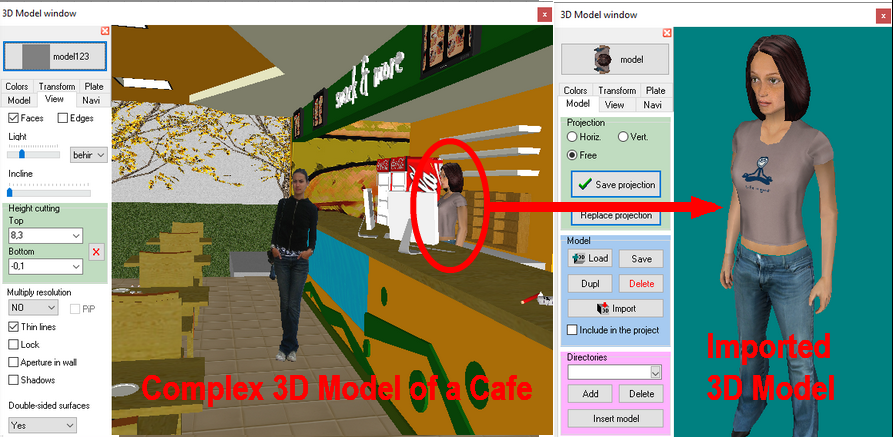
You can delete parts from 3D models.
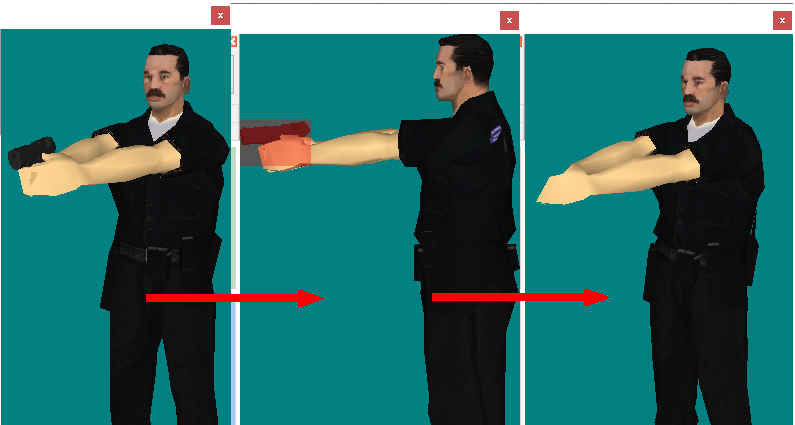
You can import 3D models and scenes from SketchUp using free VideoCAD Plugin for SketchUP 2.0. The package includes a plug-in, an example and a User Guide with step-by-step instructions on how to add a new 3D model to VideoCAD library.
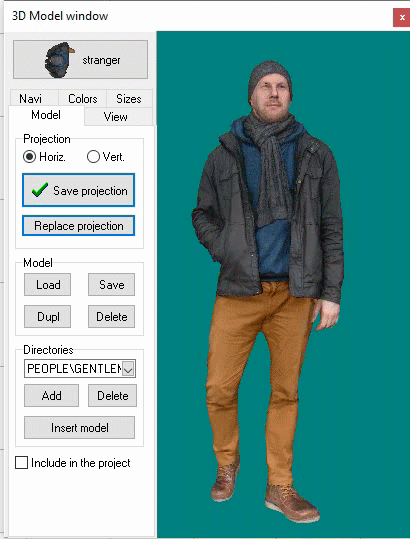
Possibility of using 3D models-territories, to place inside them cameras, constructions and other 3D models.

All constructions can be not only painted, but also covered by materials. Any raster images in the formats *.bmp, *.jpg, *.gif, *.tif, *.png can be used as materials.Using materials you can significantly improve appearance of images of the project.

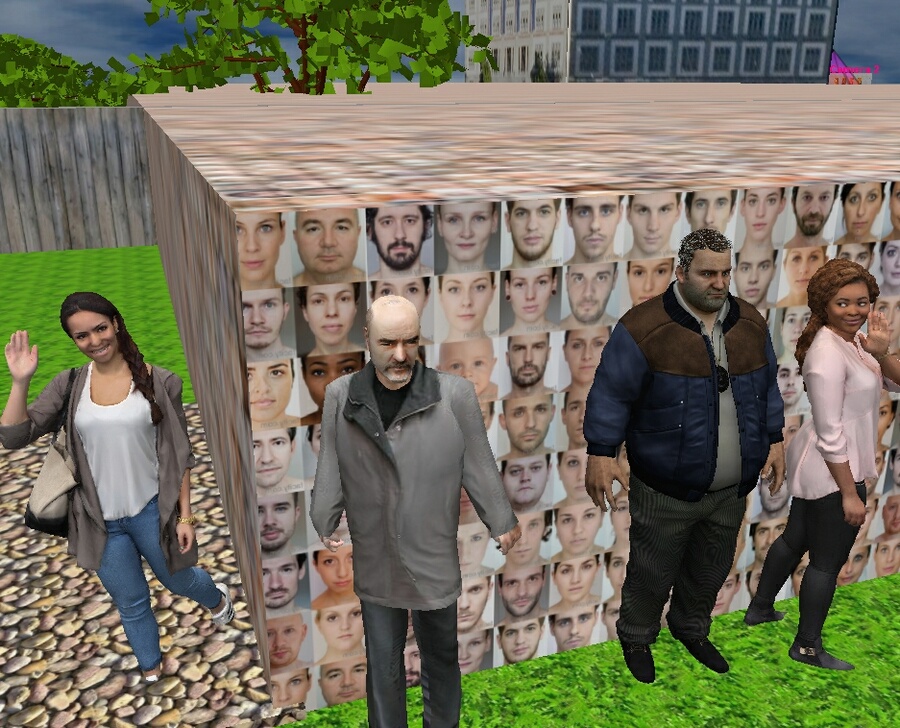


Modeling images from cameras based on camera parameters and scene conditions
Model observed scene parameters (illumination, visibility limitations).



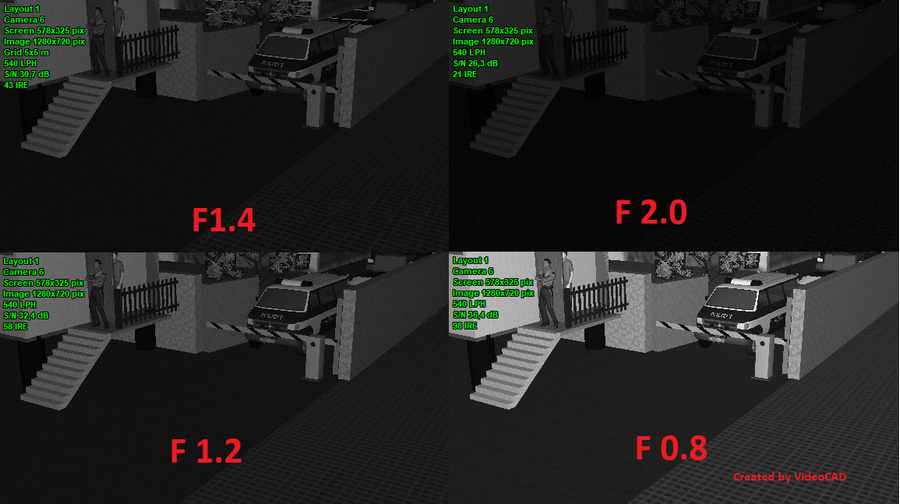
Model luminaires with photometric accuracy considering spectrum of radiation and spectral sensitivity of image sensors, including discharge lamps with complex spectrum and infrared LED illuminators.

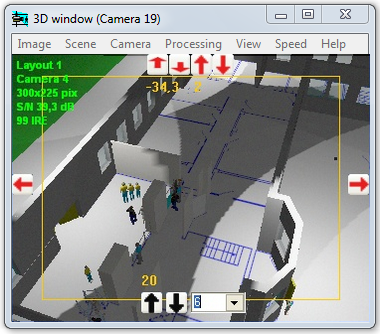
Model camera parameters (spectral response, number of pixels, resolution, minimum illumination at known signal/noise ratio, IRE and aperture, maximum signal/noise ratio, electronic shutter, AGC, BLC, gamma, day/night cameras, frame rate, interlace scan, global shutter and rolling shutter).
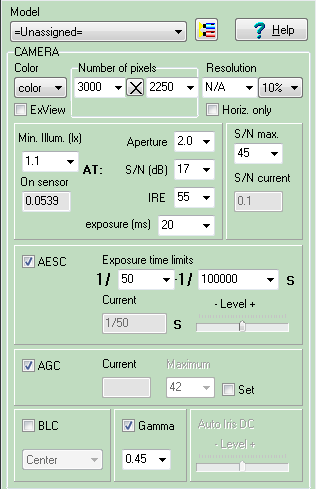
Model lens parameters (focal length, aperture, auto iris DC and Video Drive, resolution).
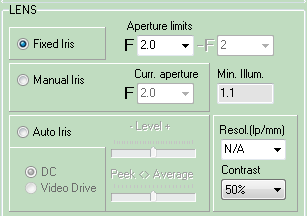
Visually control modeled resolution with the help of the Test chart.

Model images from megapixel cameras with number of pixels exceeds Windows screen number of pixels (Up to 100 megapixel and more!) with PiP (Picture in Picture) and without PiP.

See examples: 5 megapixels,10 megapixels, 25 megapixels.

Calculate and model in 3D depth of field of each camera in project.

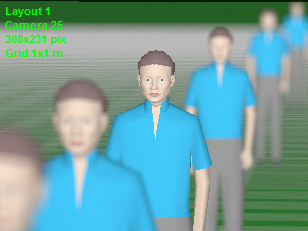
Model brightness, contrast, compression, horizontal and vertical sharpness.
Model moving objects, camera frame rate, create animated images with moving 3D models.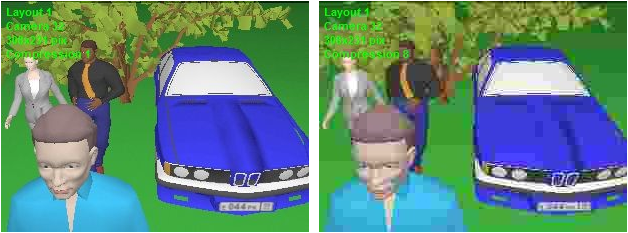
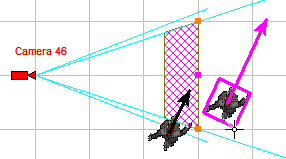
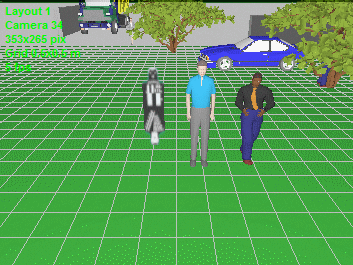
Model blur and distortion of moving 3D models depending on camera parameters (exposure time, interlacing, rolling shutter).


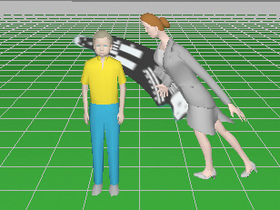
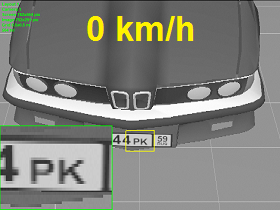

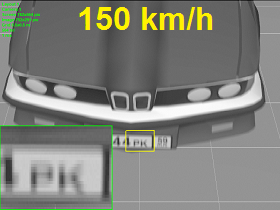

Modeling images taking into account lens distortion (barrel and pincushion). Correct modeling wide-angle lenses with strong distortion.

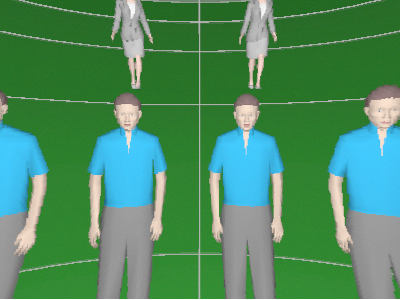
Simulation of image resolution and view area limits of Panoramic cameras (fisheye, 360�/180�).

Obtain Image Model for each camera in the project based on models of scene and equipment. This image can be printed and saved.
Modeling special cameras
Modeling horizontal projection of the view area and visualization of the pixel density of PTZ cameras.
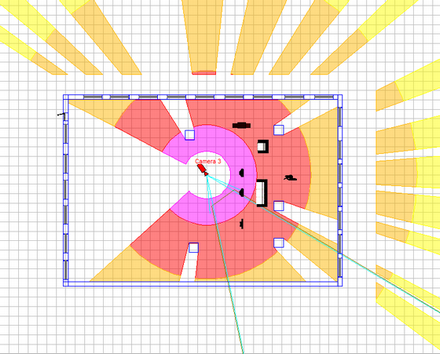
Visualization of the coverage area on the surrounding objects and the pixel density distribution of PTZ cameras.
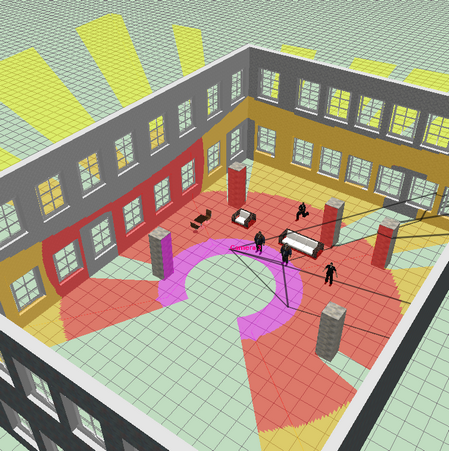
Modeling presets of PTZ cameras.

Modeling images from presets of PTZ cameras.
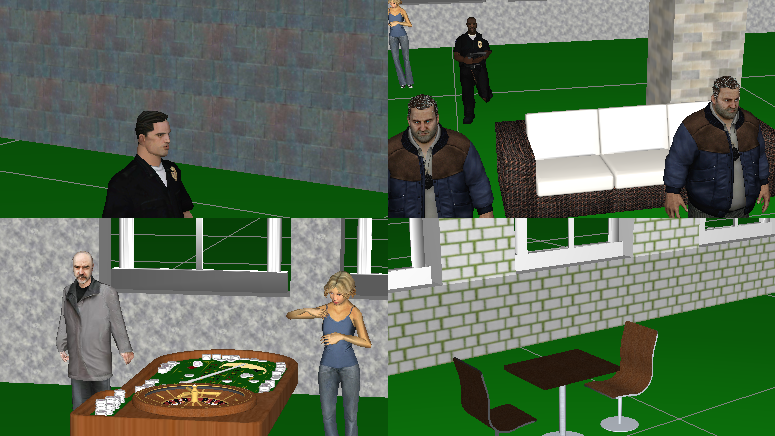
Modeling horizontal projection of view area and visualization of distribution of the pixel density of cameras with Fisheye lens.

Visualization of the coverage area on the surrounding objects and the pixel density distribution of cameras with Fisheye lens.
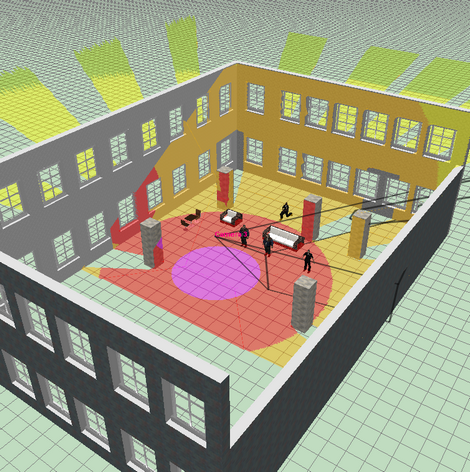
Modeling round images from Fisheye cameras.

Modeling combined round images from Fisheye cameras with one fragment with camera resolution.

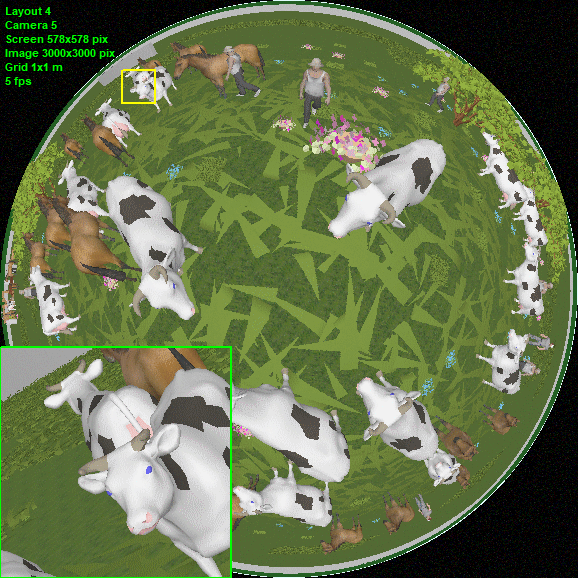
Modeling dewarped image fragments from Fisheye cameras with camera resolution.

Modeling horizontal projection of view area and visualization of distribution of the pixel density of multisensor cameras with arbitrarily directed modules.

Visualization of 3D view areas of multisensor cameras.

Modeling images from multisensor cameras with arbitrarily directed modules.

Modeling multisensor cameras with horizontal directed modules.

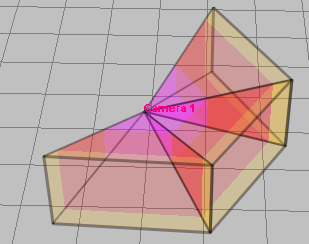


Modeling multisensor cameras with linked modules and arbitrary position in space (tilt angle, rotation angle around its axis).
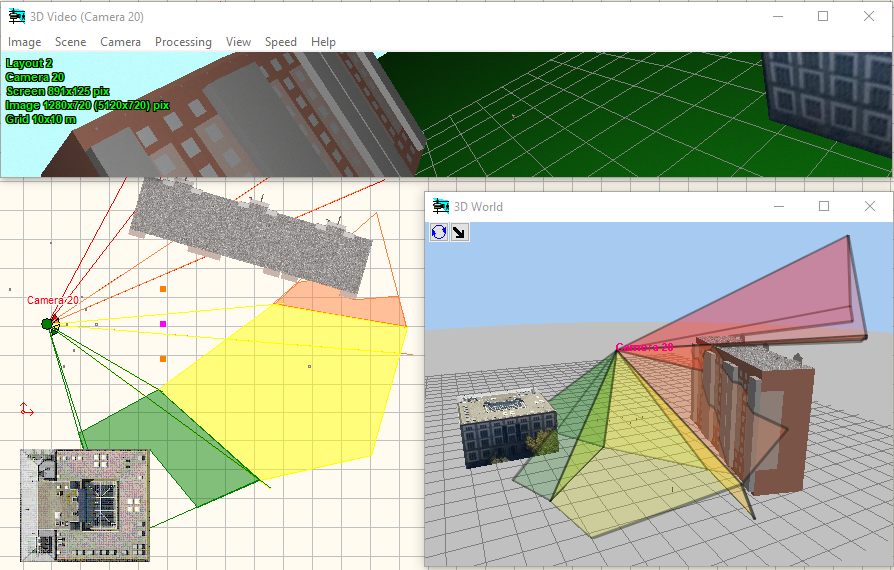
Modeling matrix multisensor cameras with linked modules directed in two dimensions and arbitrary position in space.
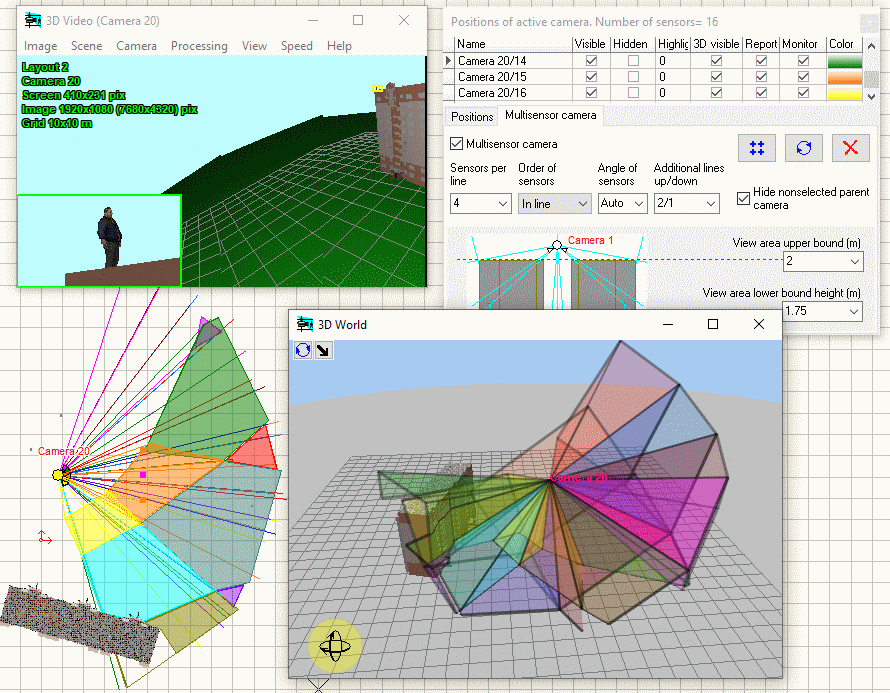
Calculation and draw on layout the IR illumination zone (where the built-in IR illumination provides an image of the target with a quality not worse than the specified one) The calculation is carried out based on the camera parameters (sensitivity, lens aperture), IR illumination (wavelength, power, radiation angle, concentration) and the required target's image quality (signal-to-noise ratio).

Instead of a rigorous calculation, you can draw a projection of the IR illumination zone, setting only the maximum distance of the IR illumination and the angle of radiation.
Modeling cameras with built-in Infrared illuminator.
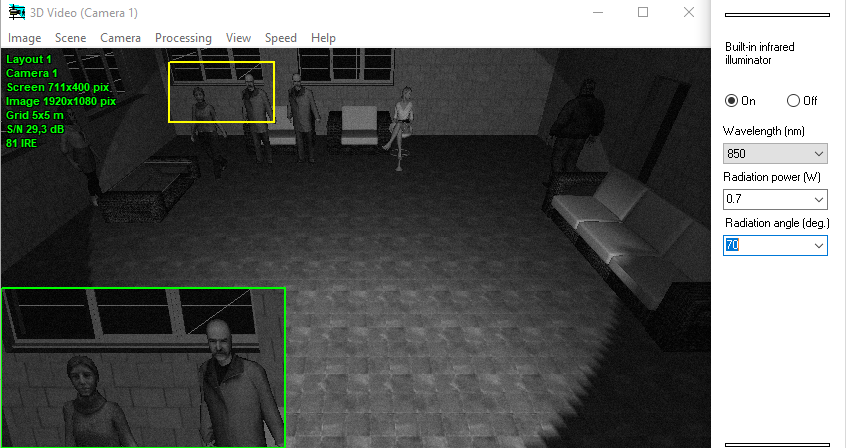
Des ign operator interface
Design operator interface using the Monitor window.
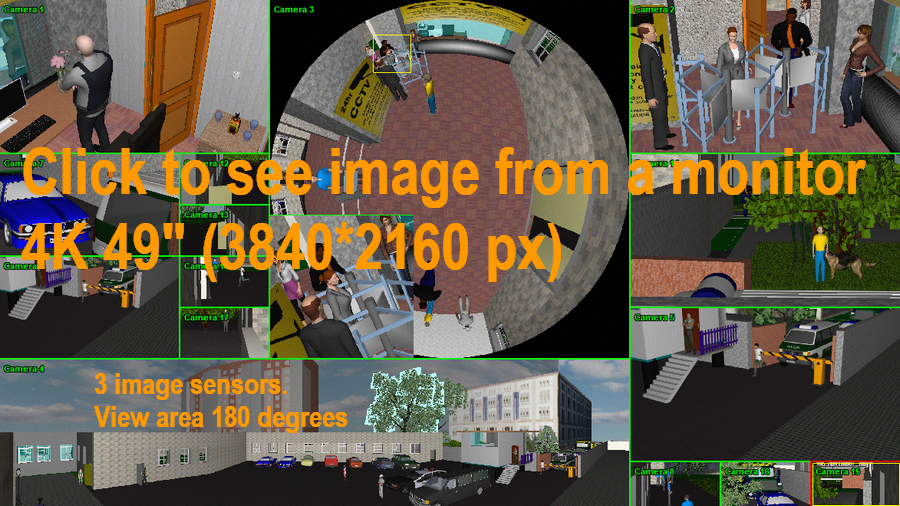
Modeling resolution of monitors.
Create animated monitor models as html files with moving 3D models and separate frame rates of each camera.
Source: https://www.cctvcad.com/cctv_design_software.html
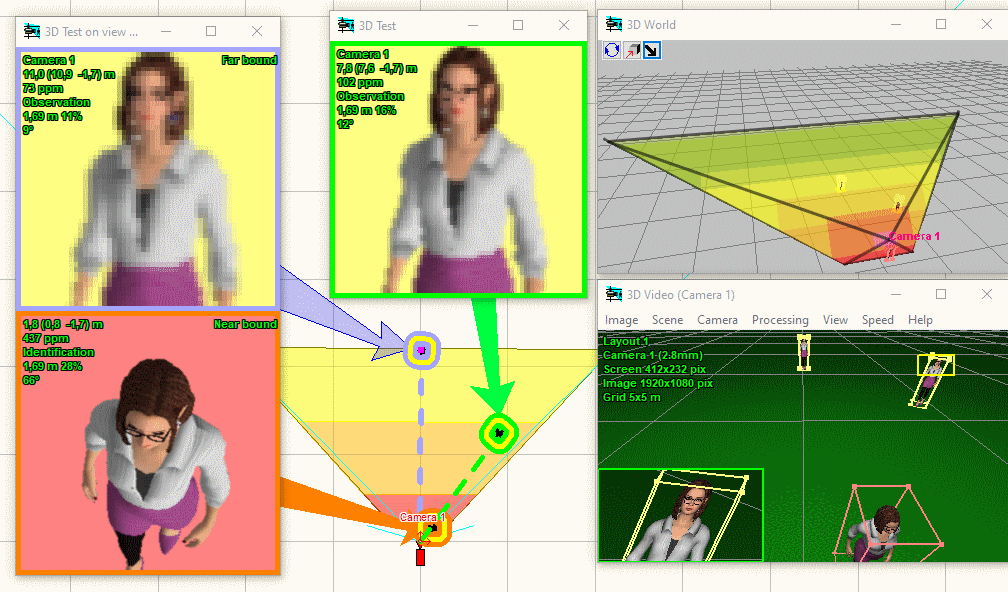
0 Response to "Cctv Camera Drawing in Autocad"
Post a Comment